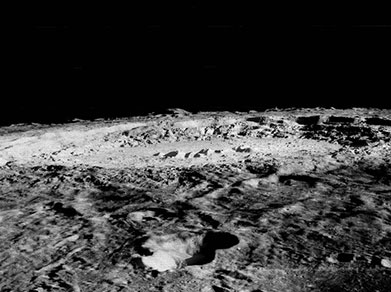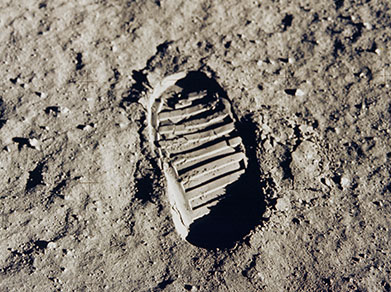
Earth's Moon is the only place beyond Earth where humans have set foot.
The Latest
The Moon Is Rusting, and Researchers Want to Know Why
The brightest and largest object in our night sky, the Moon makes Earth a more livable planet by moderating our home planet's wobble on its axis, leading to a relatively stable climate. It also causes tides, creating a rhythm that has guided humans for thousands of years. The Moon was likely formed after a Mars-sized body collided with Earth.
Our moon is the fifth largest of the 190+ moons orbiting planets in our solar system.
Earth's only natural satellite is simply called "the Moon" because people didn't know other moons existed until Galileo Galilei discovered four moons orbiting Jupiter in 1610.
NASA currently has three robotic spacecraft exploring the Moon — Lunar Reconnaissance Orbiter and the twin ARTEMIS spacecraft (not to be confused with NASA's new Artemis program to send astronauts back to the Moon).
If you set a single green pea next to U.S. nickel, you'd have a pretty good idea of the size of the Moon compared to Earth.
The Moon is Earth's only natural satellite. It goes around the Earth at a distance of about 239,000 miles (385,000 kilometers).
The Earth and Moon are tidally-locked. Their rotations are so in sync we only see one side of the Moon all the time. Human's didn't see the lunar far side until a Soviet spaecraft flew past in 1959.
The Moon is a rocky, solid-surface body with much of its surface cratered and pitted from impacts.

The Moon is a rocky, solid-surface body with much of its surface cratered and pitted from impacts.
The Moon has a very thin and tenuous atmosphere called an exosphere. It is not breathable.
The Moon has no moons.
The Moon has no moons.
The Moon has no rings.
More than 105 robotic spacecraft have been launched to explore the Moon. It is the only celestial body beyond Earth—so far—visited by human beings.
The Moon's weak atmosphere and its lack of liquid water cannot support life as we know it.
Apollo astronauts brought back a total of 842 pounds (382 kilograms) of lunar rocks and soil to Earth. We are still studying them.

A partial lunar eclipse will be visible in Africa and the Central Pacific on July 16, 2019 (Viewing Guide). During a lunar eclipse, Earth comes between the Sun and the Moon, blocking the sunlight falling on the Moon. There are two kinds of lunar eclipses:
A total lunar eclipse occurs when the Moon and Sun are on opposite sides of Earth.
A partial lunar eclipse happens when only part of Earth's shadow covers the Moon.
NASA Lunar Eclipse Guides: 2011-2020 and 2021-2030.
During some stages of a lunar eclipse, the Moon can appear reddish.
This is because the only remaining sunlight reaching the Moon at that point is from around the edges of the Earth, as seen from the Moon's surface. From there, an observer during an eclipse would see all Earth's sunrises and sunsets at once.
Page Updated: October 7, 2019